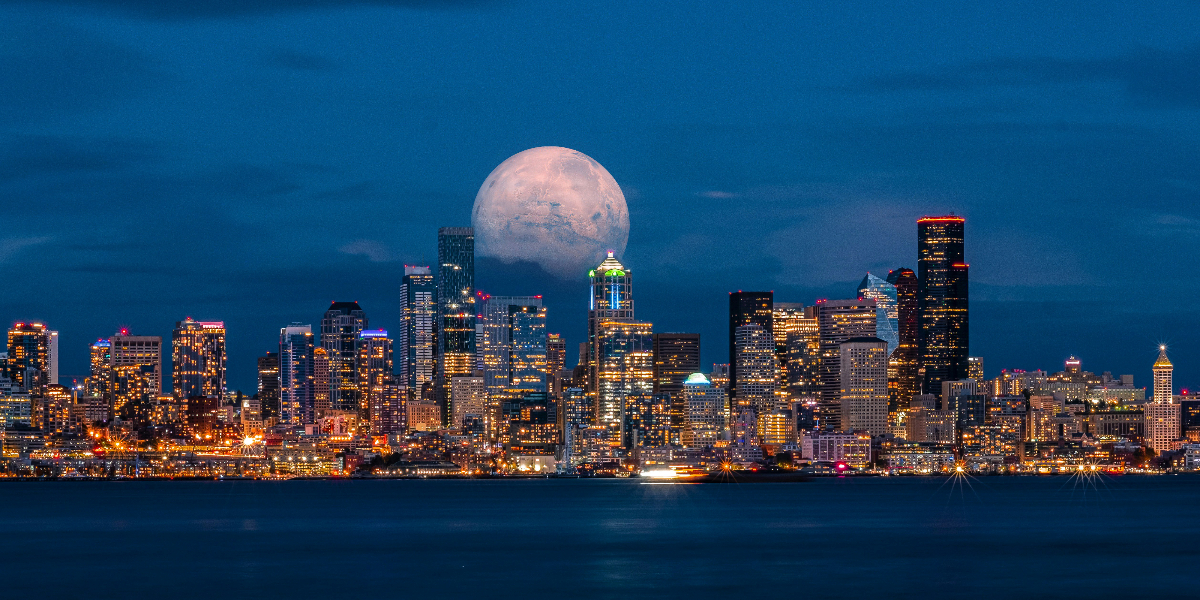Rebecca Boyle is a contributing editor at Scientific American, a contributing writer for Quanta Magazine and The Atlantic, and a frequent contributor at the New York Times, Popular Science, Smithsonian Air & Space, and many other publications. She is the recipient of numerous writing awards throughout her career, and her work has been anthologized multiple times in The Best American Science & Nature Writing.
Below, Rebecca shares 5 key insights from her new book, Our Moon: How Earth’s Celestial Companion Transformed the Planet, Guided Evolution, and Made Us Who We Are. Listen to the audio version—read by Rebecca herself—in the Next Big Idea App.

1. Earth owes the stability of its climate to the Moon.
Our planet is tilted about 23.5 degrees on its axis, which is why we have seasons. This tilt stays pretty much the same over time, with a couple of degrees shifting over tens of thousands of years. But other planets don’t have this stability.
Mars is tilted by about 25 degrees, for instance. Although Mars is a lot like Earth—similar axial tilt, a day (called a sol) that’s just a few minutes longer than ours—it doesn’t have a Moon to speak of. Its twin satellites are dinky little spuds that play no major role in Mars’ story. The lack of a Moon may be one reason Mars has such an intense, wild climate.
In the past 10 to 20 million years, Mars has wobbled like a top, swinging wildly between 13 degrees and 40 degrees on its axis. When it’s at 40 degrees, its carbon dioxide polar ice caps point nearer to the Sun and can completely melt or sublime (to turn directly from ice into vapor). This injects gargantuan amounts of carbon dioxide into the Martian atmosphere, causing extreme climate shifts. But during the past 10 million years, Earth’s axial tilt has shifted by only 2 degrees. The Moon is the reason why.
2. The Moon probably enabled the evolution of terrestrial life.
Backboned animals left the water once. They went back numerous times, evolving into whales and other creatures. But when fish left the water during the Devonian period, life on Earth changed forever. This happened because the Moon dragged animals ashore through its tide and stranded them.
“The lack of a Moon may be one reason Mars has such an intense, wild climate.”
In order to survive, they would have had to breathe the air and move themselves across the sand to safety and to find food. Over eons, the fish that evolved random changes to do this are the ones who survived. These fish, stranded by the Moon’s tidal pull, are the founding mothers of our lineage, the tetrapods.
3. The Moon gave us religion and science.
Religious worship and devotional practices dedicated to the Moon gave us the foundation of science. I think these enterprises are quite alike in their goals, if not in their methods. Both give us tools that can help us understand the profound difficulty of our existence.
We struggle with the finality of death, and we also struggle with eternity because it’s hard for us to imagine being outlived—whether it is by our own children or the entire Earth. The Moon was the best way for early cultures to conceptualize these things, especially the ideas of becoming and birth; declining and death; and returning, rebirth, and the everlasting.
“Religion desires people to accept ideas and willingly believe them; science desires people to reject ideas, then mess around and find out.”
Science flowed from these original quests for understanding. Early civilizations had religious or superstitious reasons for learning lunar rhythms, but the end result was empirical knowledge. My hero Carl Sagan once wrote, “Science is, at least in part, informed worship.” I think what he meant was that the scientific enterprise and the religious enterprise are both about being humbled by creation and seeking to understand our place in it. The difference is that religion is based on belief, and the heart of modern science is the exact opposite—not religious unbelief, but disbelief. A scientific hypothesis must be something you can both test and disprove; if your idea is conceivably false, you must be able to demonstrate that it is false.
To paraphrase the historian of philosophy, Bertrand Russell, religion desires people to accept ideas and willingly believe them; science desires people to reject ideas, then mess around and find out. But I think both are still fundamentally about discovering who we are and how we got here.
4. The Moon is a part of us all.
The Moon formed from a titanic collision between a Mars-sized world and the early Earth more than four billion years ago. Earth was still brand new when it was destroyed and remade by this event. The Earth and the Moon share the same material because they were born at the same time. This is incredibly unusual. We are the only planet in the entire solar system with a moon like this. Other Mooned planets have tiny little crumbs around them. Our Moon is one-fourth the size of our planet. It’s huge.
We don’t know if there are any exomoons out there, but astronomers are looking. When we find them, I think those planet systems will be good places to look for life.
5. The people who control the calendar control society, and the Moon was the first thing to give people this power.
In ancient cultures, managing the way we mark time would have given leaders control over things like sowing and harvesting crops, holding gatherings and celebrations, hosting religious festivals, transacting business, and so on. Some of the practical effects can be left to the imagination, but people had to follow the calendar—and therefore follow whoever made it.
The Moon and its reliable 29.5-day cycle was the easiest and most obvious way to form a calendar. But it’s tricky to align the lunar month with the solar, seasonal year. The people who figured out how to do this, or who controlled the tools necessary to do it, inherently had power over other people’s lives.
“The Moon and its reliable 29.5-day cycle was the easiest and most obvious way to form a calendar.”
Here’s a more modern example of how calendars confer power. Election Day is on the second Tuesday in November because Congress passed a law in 1845 based on the needs of farmers, in what was then an agrarian nation. The Electoral College votes in December, and people needed time to collect ballots from far-flung polling places to tabulate results in time. So Congress back-dated the electoral college deadline by a few weeks, giving us early November.
Men needed a day or so to walk or ride a horse to the polling place, so Congress needed to build in a travel day. Sunday was a rest day for church, so that was out; Monday was a fine travel day, and that’s why we still vote on Tuesday. However, studies have shown midweek elections disenfranchise voters, particularly lower-income voters and people in states that don’t allow early voting or that make it harder to get absentee ballots. It would take an act of Congress to move Election Day or to make it a federal holiday, and support is generally higher among Democrats than Republicans, so I don’t expect it will change anytime soon.
The seven-day week is derived from dividing the lunar cycle by four, so in an indirect sense, the Moon still confers power to those who control the civil calendar and the events on it.
To listen to the audio version read by author Rebecca Boyle, download the Next Big Idea App today:































